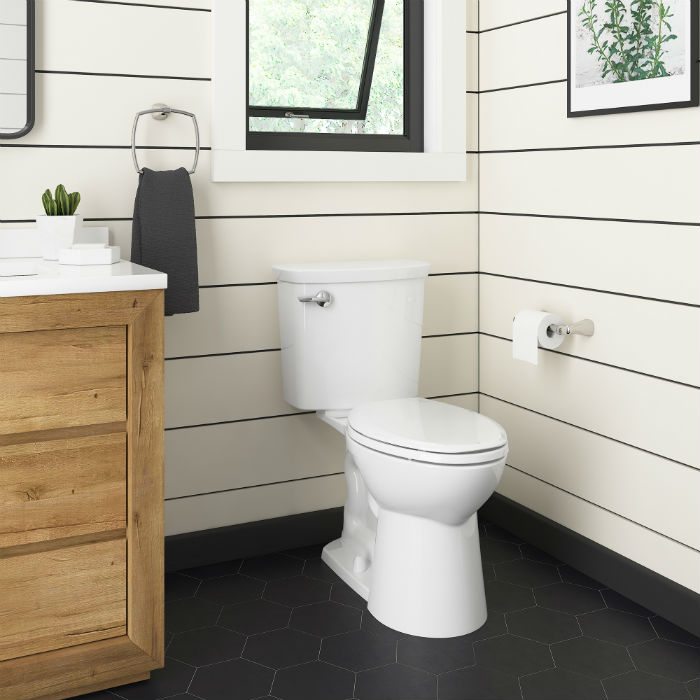Let’s take a look at two-piece toilets and how they compare to their one-piece counterparts in terms of quality, performance, installation, price, and more. A famous philosopher once said the “whole is greater than the sum of its parts” insightful indeed but does that saying apply to two-piece toilets?
An Overview of Two-Piece Toilets
As the name suggests, this toilet comes in two distinct pieces but it’s not as disjointed as it sounds. Most people in the United States probably have two-piece toilets in their bathrooms as it’s the most popular toilet choice among homeowners. The two-piece toilet is familiar and features the bowl with the water tank sitting on top of it.
On the other hand, a one-piece toilet has the bowl and tank seamlessly connected in one fluid unit without the need for cracks, crevices, and joints. From a purely aesthetic point of view, the one-piece toilet does tend to look more sleek and sophisticated. That being said, if you’re not too concerned about looks or space, then you are probably ok with a two-piece model.
Features of a Two-Piece Toilet
A two-piece toilet has the same performance level as a one-piece model. Both are efficient and reliable with the two-piece design having the benefit of being more adaptable. For instance, say that your water tank needs major repairs or even a replacement. You can simply fix the tank without worrying about the entire unit. If you had a one-piece toilet, the whole thing would have to be replaced since everything is connected.
One potential drawback of a two-piece toilet is that it takes up a bit more space than a one-piece design. Therefore, it can be trickier to find the right model for a smaller bathroom or powder room. Homeowners and plumbers need to make sure that they take into account the extra space that they will need to accommodate the tank since it juts out more in a two-piece design.
Another disadvantage is that two-piece designs naturally have more nooks and crannies, which can harbor lots of dirt and buildup. Cleaning this toilet regularly will be important to prevent the presence of bacteria and mold. Speaking of mold, a two-piece toilet is going to be more prone to leaking since the tank is separated from the toilet bowl. Leakage can lead to bigger problems later on if the issue is not dealt with promptly.
All that being said, you don’t need to rush out and replace your two-piece toilet with a one-piece variety. Odds are that you have grown up with a two-piece model and so you are used to it. You know how to clean it and check on any issues that could arise. As long as you’re not neglecting it and letting it sit there in grime and disrepair, you should be fine.
Two-Piece Toilet Parts and Specifications
Both one-piece and two-piece toilets have similar manufacturer parts and the production process does not differ too much. You could even find a more compact version of a two-piece model if you needed it. The only thing is that it would be a bit more difficult to find but not impossible.
All in all, manufacturers and plumbers will be familiar with the features and components of a toilet regardless of whether it’s a one-piece or a two-piece. Some of the specs might even be the same. For example, flushing power and water efficiency can be the same in both models.
Advantages of a Two-Piece Toilet
When it comes to installation, the two-piece unit comes out on top. It is much easier to install even for a beginner DIY-er since you can deal with the bowl and the tank separately. Compare that to a one-piece design in which everything is connected as one big unit. Working with a two-piece toilet means that less strength and risk is involved.
Another advantage is that two-piece toilets tend to be more affordable, thanks to a more straightforward production process and the familiarity of the design. The average two-piece toilet from a home improvement shop will hover around the $200 mark.
As with the one-piece counterpart, these toilets can last for years as long as they are installed properly and well maintained. It explains why American households have been using two-pieces for so long.

